48 hours in Berlin: a guide to all the must-see sights
Want to know what to do for two days in Berlin? It’s not enough time to discover the whole city but you can certainly visit the highlights of Mitte, Kreuzberg and Friedrichshain. These three neighbourhoods (Kieze) make up the heart of Berlin and are home to many of the city’s best sights and attractions.
When you are limited on time, you want to make sure that you have an easy way to get around the city. Our Hop on Hop off buses are perfect for this and you can get tickets that are valid for 48 hours, so you are covered for your whole visit to Berlin. For your 48 hours in Berlin we recommend that you spend the first day in Mitte and the second in Kreuzberg and Friedrichshain.
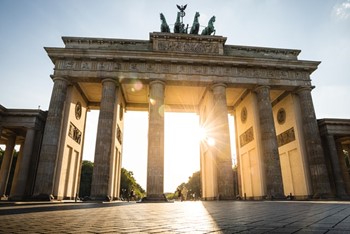 Must-see sights in Berlin Mitte
Must-see sights in Berlin Mitte
Let’s start the day in the heart of Berlin at Berlin’s most iconic and world famous landmark: the Brandenburg Gate. Once the symbol of the country’s separation between East and West Berlin, it is now a symbol of the German reunification. Just south of the Brandenburg Gate, you can visit the Memorial to the Murdered Jews of Europe. This vast and maze-like memorial consists of 2711 columns and an underground exhibition room.
To the north of the Brandenburg Gate, you will find Germany’s parliament and centre of power, the Deutsche Bundestag. If you fancy seeing the impressive glass dome from inside and learn more about its history, make sure to book your tickets well in advance. From the Reichstag Building, you can easily make your way into Tiergarten park.
The park is the perfect place to get some fresh air, away from the city streets. As you make your way through the park, try to head south. This will allow you to exit the park at the Tiergartenstraβe and Ben-Gurion-Straβe intersection, by the Legoland Discover Centre, Museum of Musical Instruments, Berliner Philharmonie, and Hop on Hop off bus stop Kulturforum.
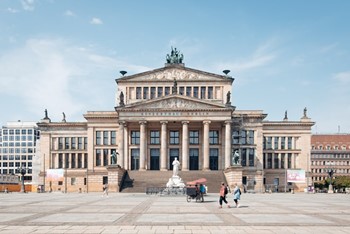 Take the bus to one of Berlin’s most beautiful squares: Gendarmenmarkt. The square is lined by the impressive Konzerthaus Berlin, French Cathedral and German Cathedral, also known as Neue Kirche, and at its centre stands a statue in tribute to Friedrich Schiller, a German poet and writer. The streets surrounding the square offer lots of cafés and restaurants to enjoy a nice lunch.
Take the bus to one of Berlin’s most beautiful squares: Gendarmenmarkt. The square is lined by the impressive Konzerthaus Berlin, French Cathedral and German Cathedral, also known as Neue Kirche, and at its centre stands a statue in tribute to Friedrich Schiller, a German poet and writer. The streets surrounding the square offer lots of cafés and restaurants to enjoy a nice lunch.
Next, hop back on the bus for one more stop to make your way to the Neptunbrunnen stop. This stop is only few minutes from several great attractions and museums. You can relax on the water with a Wassertaxi river cruise, go on a polar expedition at the Berlin Icebar, travel back in time to the time of the Berlin Wall at the DDR Museum, and discover the extraordinary museums on Museum Island.
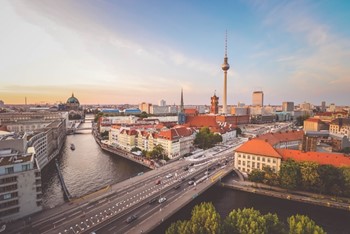 For an incredible sunset view, head to the TV Tower on Alexanderplatz. This unmissable part of the capital city skyline soars 368 metres into the sky, with an observation deck at 203 metres off the ground. A lift will take you up so you can get a breath-taking panorama view of the city. The major public square also offers plenty of great restaurants to try with something for everyone’s taste.
For an incredible sunset view, head to the TV Tower on Alexanderplatz. This unmissable part of the capital city skyline soars 368 metres into the sky, with an observation deck at 203 metres off the ground. A lift will take you up so you can get a breath-taking panorama view of the city. The major public square also offers plenty of great restaurants to try with something for everyone’s taste.
Discovering Kreuzberg and Friedrichshain
Start day two in Berlin at one of the most famous attractions in the city: Checkpoint Charlie. This former border checkpoint used to be the most famous crossing point between West and East Berlin. Everything around the checkpoint is just as it was before the Berlin Wall fell, including the barrier, flag, sandbags and the checkpoint booth.
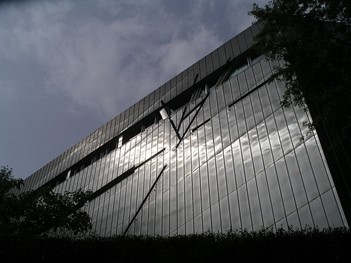 Kreuzberg is home to several great museums which can rival with those on Museuminsel. The Jewish Museum, for example, is the biggest of its kind in Europe and explores German history and Jewish culture through thousands of objects and their stories. One street over from the Jewish Museum stands the Berlinische Galerie, which collects and preserves modern contemporary art, photography and architecture made in Berlin, truly showing how the German capital is a city of artists.
Kreuzberg is home to several great museums which can rival with those on Museuminsel. The Jewish Museum, for example, is the biggest of its kind in Europe and explores German history and Jewish culture through thousands of objects and their stories. One street over from the Jewish Museum stands the Berlinische Galerie, which collects and preserves modern contemporary art, photography and architecture made in Berlin, truly showing how the German capital is a city of artists.
Kreuzberg is one of the most diverse and multicultural districts in neighbourhood and it is has the food culture to match. In the eastern part of the neighbourhood, closer to the river, a visit to the Markthalle Neun is an event for foodies. Every Tuesday, Friday and Saturday you can find a weekly local market here where you can buy the best foods to tickle your taste buds, ranging from fresh homemade pasta to craft beer to traditional Italian baked goods.
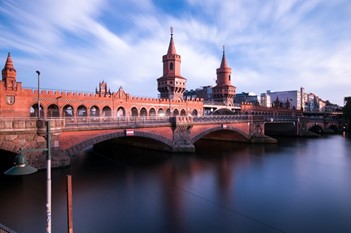 From the Markhalle Neun it is only a fifteen minute walk to the Oberbaum Bridge. This eye-catching bridge connects the Kreuzberg and Friedrichshain districts and is considered to be the most beautiful bridge in Berlin. Road traffic and the subway pass over the bridge, while pedestrians use the walkway underneath.
From the Markhalle Neun it is only a fifteen minute walk to the Oberbaum Bridge. This eye-catching bridge connects the Kreuzberg and Friedrichshain districts and is considered to be the most beautiful bridge in Berlin. Road traffic and the subway pass over the bridge, while pedestrians use the walkway underneath.
On the opposite side of the Spree river, stands the East Side Gallery, the longest open-air gallery in the world as well as the longest intact part of the Berlin Wall. After the Wall fell, 118 artists from 21 countries redesigned 1316 meters of the former border wall, creating the Gallery. The artists’ works comment on the political changes after the fall of the Berlin Wall, mirroring how people handled their life afterwards.
Finally, head to the heart of the Friedrichshain neighbourhood: Boxhagener Platz, also known as Boxi. The square between Krossener and Grünberger Straße is home to some of Friedrichshain’s coolest cafes, bars, shops and restaurants and a popular meeting point for locals, a lively melting pot of young families and bohemians.
Want to end your long weekend of touring Berlin with a relaxed and unique movie experience? Head over to Kino Intimes, this small movie theatre covered in graffiti is a local legend. The humble interior and size of the cinema form a refreshing contrast with the omnipresent franchise cinemas. And especially important for those who don’t speak German, while most movies in German theatres are shown in dubbed versions, Kino Intimes always screens International films in the original version with German subtitles.
